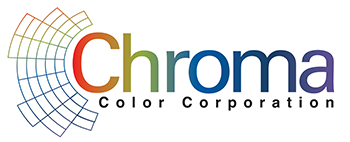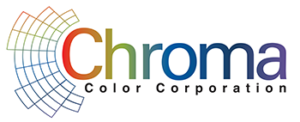What is Color?
Color is a phenomenon so rich and complex in scope that it touches all human activity.
It is the attribute of visual sensation or, by extension, an object or light that can be described by such terms as red, green, blue, yellow, white, black, etc.
Color is as common in our environment as the air we breathe, in fact, it is so prevalent that we are not always aware of just how much we depend on it.
The Color Challenge
Color is much more than something physical. Color is what we see, the result of a physical modification of light by colorants as observed by the human eye and interpreted by the brain. This is an enormously complicated train of events.
With a basic understanding of color in the broad sense, we can approach some commercial problems involving color.
These problems are concerned with answering such questions as:
- Does the sample match the one we made last week?
- Do these two colors match?
- What pigments do I use to produce a match to the target?
- What pigments will perform satisfactorily in this process?
Subjective or Objective
- Traditionally, questions like these and others have only subjective answers, based upon the skills and knowledge of the trained color matcher. As everything evolves, so has the art and science of color technology.
- Color computers and software are being perfected, and higher quality training is available. Some universities now offer polymer science courses with color matching and processing. In the past, these skills were learned on the job by trial and error.
Color vision in humans is based on the additive color theory. This theory states that all perceivable colors can be made by mixing different amounts of red, green, and blue light, the primary colors of the additive color system. … The three additive primaries are at the center.
Subtractive color mixing is the kind of mixing you get if you illuminate colored filters with white light from behind, as illustrated at above.
The commonly used subtractive primary colors are cyan, magenta, and yellow, and if you overlap all three in effectively equal mixture, all the light is subtracted giving black.
Color The Challenge:
- It can be complex, elusive, powerful, fickle, and demanding.
- Our Challenge is to control it, and to achieve consistent quality.
- It stirs emotions, starts arguments, and sells products.
- To respond to our customers quickly; producing products in an efficient manner that allows our customer to keep their product costs in line without sacrificing quality or consistency.
Light Source- Consistency is Critical
The color you see is also affected by the type of light source.
- Artificial lighting comes in a variety of colors:
- Illuminant A-tungsten, a red/yellow light source.
- D-65 & Cool White Fluorescent, blue/green light, closest to noonday sun.
- Normal Incandescent, a very yellow light.
These light sources were designed to bring consistency into color matching, and to accentuate the color of a product on display.
Metamerism – A Phenomenon
A term used in the color industry for the phenomenon exhibited by two surfaces/samples/targets that appear to be the same color under one light source (e.g. Daylight), but which do not match in color when viewed under a different light source (e.g. Incandescent).
Today’s color computer software provides the color matcher with tools to minimize metamerism and arrive at formulations that offer an acceptable match under a variety of lighting conditions.
Guide To Mixing Colors
Additive Mixing occurs when colored lights are superimposed to achieve a different color.
If the three primary additive colors (red, green, blue) are mixed evenly, white light is achieved. There is no black or gray in additive mixing. A color television screen is an example of additive mixing.
Subtractive Mixing is the most common type of color mixing. This occurs when pigments and dyes are mixed to achieve an object color.
If the three primary subtractive colors (Cyan, Magenta, Yellow) are mixed evenly, all light is subtracted, producing black. Opaque objects are examples of subtractive mixing. The plastic industry works in this area.
Colorant Terminology
Because colors can evoke an emotional response, colors are often described in subjective terms such as “warm” or “bold” or “peachy”, which leads to confusion when people who work with color talk to each other.
Subjective Terms Often Used to Describe Color
“Make it Warmer”
“Make it Cooler/Colder”
“Try and make it Peachier”
“It Needs to be Bolder”
“Make it Have More Life”
“Needs to be Creamier”
“Add a Smidgen of Red”
The artist and art professor Albert H. Munsell recognized the need for objective, measurable terminology and published his Munsell Color Chart back in 1905. In the Munsell system, color is described in terms of three-color coordinates, “Hue”, “Value”, and “Chroma”.
Colorant Terminology…or lack of.
Color is “Hue”
Lightness is “Value”
Saturation is “Chroma”
These three attributes give color its three-dimensional characteristics.
- Or, to put it another way…
“Hue” is red, yellow, green, blue – the actual color you see.
Apples are red, lemons are yellow, the sky is blue – and that’s how we all perceive color in everyday language.
“Value” is the lightness or darkness of the color; it relates the color to a gray scale between black and white.
“Chroma” is vivid colors and dull colors and everything between. Chroma can be described as the purity, intensity, or clarity of a color. An example would be – a lemon has more chroma than a pear.
Color Measurement
The 3 color dimensions introduced by Munsell, can be visualized using an L*a*b* chart, as shown to the right.
Lightness/darkness or “Value” is shown on the L* axis, which varies from 0 (black) to 100 (white).
Color or “Hue” is measured in the plane determined by the a* and b* axes. Positive values of a* indicate a red color, whereas negative values indicate a green color. Similarly, positive values of b* indicate yellow, and negative values indicate blue.
Color purity or “Chroma” is measured by the magnitude of a* and b*. “Candy Apple Red”, for example, has a very large positive a* value.
For more information on conducting a Color 101 training at your company contact: [email protected]
Download this full article as a pdf: Understanding Color 101
About Chroma Color Corporation
Chroma Color Corporation is a leading specialty color and additive concentrate supplier that serves a diverse range of markets, including packaging, healthcare, pharmaceutical, wire, cable, consumer products, and others.
Chroma Color’s strategy includes robust organic growth as well as inorganic growth, that includes eight acquisitions over the past three years. Chroma’s extensive technical leadership and manufacturing expertise, coupled with its game-changing colorant and light management technologies, have delighted customers for over 50 years. Chroma Color Corporation is an Arsenal Capital Partners portfolio company. For more information, please visit: https://chromacolors.com/

